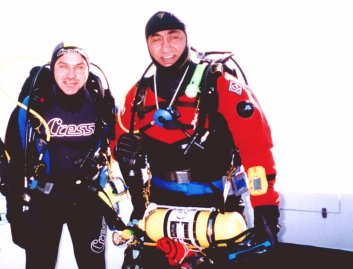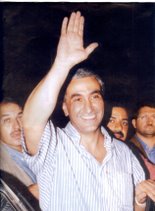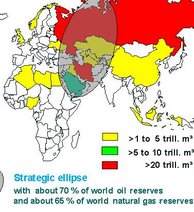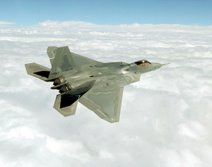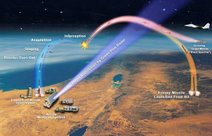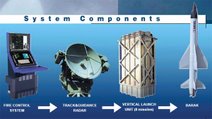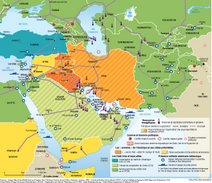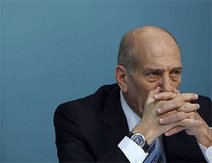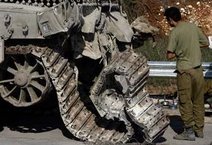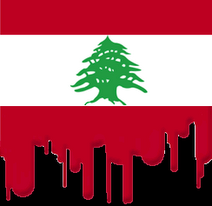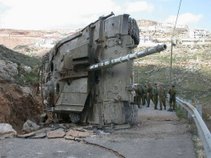
Tackling the Andean Security Dilemma
With transnational security threats, a political-ideological rift and opposed geopolitical projects and international alliances, the Andean states have a long way to go toward the establishment of functional regional security architecture. Ultimately, it is up to regional leaders to put the pieces of the South American puzzle in place.
As demonstrated by the recent stand-off between Venezuela and Colombia over the new defense cooperation agreement (DCA) between Bogotá and Washington, the Andean security dilemma is becoming more pronounced. The region urgently needs to find workable solutions to serious security problems that affect Bolivia, Colombia, Ecuador, Peru and Venezuela alike. Progress in this respect is becoming ever more elusive, however, as political polarization and deep antagonisms are tearing the Andes apart. Outside actors, in particular the United States, Brazil and the European Union, are either not doing their part to reduce the tensions or lack effective tools to do so. Hemispheric and regional organizations, such as the Organization of American States (OAS) and the recently founded Union of South American Nations (UNASUR), also are proving to be of limited help.
The costs of national security and neo-populist political stabilization
One decade ago, the five Andean nations were embroiled in nothing less than deep crisis. Colombia was gripped by increasingly intense internal armed conflict, pronounced state weakness and mushrooming drug trafficking. Bolivia, Ecuador and Peru faced serious political-institutional instability that led to the ouster of two presidents each in La Paz (2003 and 2005) and Quito (2000 and 2005). And Venezuela saw regime change and the dawn of the 'Bolivarian Revolution' heralding deep political polarization and a sharp deterioration of citizen security.
Colombia has since seen important internal security improvements, though the country remains far from resolving its protracted armed conflict. While Bolivia, Ecuador and Peru have achieved a degree of political stability, the government of Hugo Chávez in Venezuela has produced socioeconomic gains for parts of the poor majority of the population. But efforts have been undercut by government mismanagement of the country’s oil wealth as well as severe restrictions of Venezuelans’ fundamental liberties and rights and the installation of an increasingly autocratic political regime.
At the same time, there has been a progressive deterioration of relations between Colombia, on one hand, and its closest and most important neighbors, Ecuador and Venezuela, on the other. Initiatives of regional cooperation and integration, as under the today largely defunct Community of Andean Nations (CAN), have ceased to be a reality. Instead, the region has split into two politically and ideologically opposed camps that view each other with apprehension and profound distrust and pursue opposed geopolitical strategies.
Conservative restoration, 'orthodox' counter-drug and/or counter-insurgency policies and open-market economics, including free trade agreements with the US and the EU, have been at work in Colombia and Peru. The leftist and neo-populist governments of Venezuela, Bolivia and Ecuador, in turn, have been pursuing the establishment of an alternative regional bloc, the Bolivarian Alliance for the Americas (ALBA). In their quest to create state-centered 'participatory,' 'inclusive' and 'anti-neoliberal' political and economic regimes they have by and large chosen to distance themselves from Washington as well as from some liberal democracy principles.
The Colombian conundrum
Colombia’s armed conflict is at the heart of the current Andean security dilemma. Massive US military and counter-drug assistance through Plan Colombia and major Colombian military and other security efforts as well as the disarmament, demobilization and reintegration (DDR) of tens of thousands of irregular combatants have undoubtedly produced advances in the struggle against the Revolutionary Armed Forces of Colombia (FARC), National Liberation Army (ELN) and the paramilitaries. But new illegal armed groups (NIAGs) are springing up, some paramilitaries persist, the weakened guerrillas are adapting to the changing security environment and drug-trafficking continues.
Moreover, the military onslaught in Colombia, which has not been accompanied by a political strategy to end the conflict, has pushed the guerrillas and drug-traffickers across the country’s borders. In a setting characterized by deep mutual distrust and the breakdown of communication with his Ecuadorian and Venezuelan counterparts, Álvaro Uribe has taken the war to the insurgents beyond Colombia’s confines. In reaction to a Colombian raid on a clandestine FARC camp inside Ecuador on 1 March 2008, Rafael Correa severed diplomatic relations with Bogotá and Hugo Chávez threatened with armed reprisals should Colombia attempt a similar action in Venezuela.
The strategic alliance between Colombia and the US in the fight against drugs and the insurgents, as reflected in Plan Colombia and the recently signed new US-Colombian defense cooperation agreement (DCA), which allows for the continuation of broad security and counter-drug cooperation between the two countries for a decade or longer, is perceived as a threat in Caracas and Quito. In effect, Ecuadorian and Venezuelan national security concerns should not be overlooked or underestimated. However, both governments are also responsible for having maintained an ambivalent or even tolerant stance vis-à-vis the Colombian guerrillas. The FARC and ELN can operate with relative impunity in and from Venezuela and to a lesser degree Ecuador, where they and other Andean criminal outfits are engaging with local officials, members of the security forces and others in illegal transactions ranging from gun running, gasoline contraband to drug trafficking.
A regional response to regional problems
Colombia’s armed conflict, pervasive transnational organized crime and increasing levels of citizen insecurity, especially in Venezuela, require a regional response. The close alliance between Bogotá and Washington – which started under Presidents Bill Clinton and Andrés Pastrana in the late 1990s, was reinforced under Presidents George W Bush and Álvaro Uribe and continues today, albeit with less enthusiasm on the US side, under President Barack Obama – needs to be revised. Not only have the goals of counter-drug policy not been achieved, but the US’ mostly military and counterterrorism support under Plan Colombia has reinforced the Uribe administration’s policy of seeking the elusive military defeat of the insurgents and not dealing seriously with the elaboration of a political conflict resolution framework. Bogotá’s closeness to Washington has contributed to deepening the Andean rift – a process in which Caracas, Quito, La Paz and Lima have of course also played their role.
It is often held that the regional response to the current tensions between Colombia and Venezuela, sparked by the DCA, as well as previous potentially dangerous episodes of intra-Andean friction, has been ineffective. There is some truth to this argument but it needs to be qualified. After all the OAS and, in particular, the Río Group managed to quickly ease through diplomatic means the serious political-diplomatic crisis that was brought about by the March 2008 bombing of the FARC camp in Ecuador through diplomatic means. In spite of this 'success' in deescalating tensions, it must not be overlooked that during the following year and a half Quito and Bogotá engaged in constant mutual recriminations and had no diplomatic relations, which only now are being cautiously reestablished.
With regards to the confrontation between Venezuela and Colombia over the DCA, the recently founded Union of South American Nations (UNASUR) and its Defense Council as well as Brazilian President Lula da Silva, who offered to mediate in the crisis, ultimately failed to get Caracas and Bogotá to formally settle their differences. The Río Group remained silent, as did the OAS. However, it is no small feat that regional security issues, among them the DCA, were discussed amply in a string of meetings under the UNASUR umbrella (in Quito and Bariloche in August and in Quito in September and November). Some of these meetings were attended by the UNASUR presidents and defense ministers. It is further not an insignificant development that the fledgling South American Defense Council was charged with handling the DCA issue, and that the delegations who attended the November meeting in Quito by and large accepted the formal guarantees offered by Colombia and the US that the agreement would respect the national sovereignty of the other states in the region.
This notwithstanding, it is clear that the Andean region still has a very long way to go regarding the establishment of a functioning regional security architecture. The above-mentioned political-ideological rift that divides the region, deep mutual distrust, opposed geopolitical projects and international alliances, and not least the enormously challenging nature of the transnational security threats, such as Colombia’s armed conflict and drug-trafficking, all conspire against regional security improvements. In addition, Brazil’s role in moving the region’s security agenda forward is as yet not clearly defined, and UNASUR and its Defense Council are still fledgling entities in dire need of developing capacities to improve regional governance, including in the field of security.
South America and the Andes have to live up to these challenges because nobody else will and should do this job for the region, which inevitably would stand to continue witnessing instability and frequent security crises.
With transnational security threats, a political-ideological rift and opposed geopolitical projects and international alliances, the Andean states have a long way to go toward the establishment of functional regional security architecture. Ultimately, it is up to regional leaders to put the pieces of the South American puzzle in place.
As demonstrated by the recent stand-off between Venezuela and Colombia over the new defense cooperation agreement (DCA) between Bogotá and Washington, the Andean security dilemma is becoming more pronounced. The region urgently needs to find workable solutions to serious security problems that affect Bolivia, Colombia, Ecuador, Peru and Venezuela alike. Progress in this respect is becoming ever more elusive, however, as political polarization and deep antagonisms are tearing the Andes apart. Outside actors, in particular the United States, Brazil and the European Union, are either not doing their part to reduce the tensions or lack effective tools to do so. Hemispheric and regional organizations, such as the Organization of American States (OAS) and the recently founded Union of South American Nations (UNASUR), also are proving to be of limited help.
The costs of national security and neo-populist political stabilization
One decade ago, the five Andean nations were embroiled in nothing less than deep crisis. Colombia was gripped by increasingly intense internal armed conflict, pronounced state weakness and mushrooming drug trafficking. Bolivia, Ecuador and Peru faced serious political-institutional instability that led to the ouster of two presidents each in La Paz (2003 and 2005) and Quito (2000 and 2005). And Venezuela saw regime change and the dawn of the 'Bolivarian Revolution' heralding deep political polarization and a sharp deterioration of citizen security.
Colombia has since seen important internal security improvements, though the country remains far from resolving its protracted armed conflict. While Bolivia, Ecuador and Peru have achieved a degree of political stability, the government of Hugo Chávez in Venezuela has produced socioeconomic gains for parts of the poor majority of the population. But efforts have been undercut by government mismanagement of the country’s oil wealth as well as severe restrictions of Venezuelans’ fundamental liberties and rights and the installation of an increasingly autocratic political regime.
At the same time, there has been a progressive deterioration of relations between Colombia, on one hand, and its closest and most important neighbors, Ecuador and Venezuela, on the other. Initiatives of regional cooperation and integration, as under the today largely defunct Community of Andean Nations (CAN), have ceased to be a reality. Instead, the region has split into two politically and ideologically opposed camps that view each other with apprehension and profound distrust and pursue opposed geopolitical strategies.
Conservative restoration, 'orthodox' counter-drug and/or counter-insurgency policies and open-market economics, including free trade agreements with the US and the EU, have been at work in Colombia and Peru. The leftist and neo-populist governments of Venezuela, Bolivia and Ecuador, in turn, have been pursuing the establishment of an alternative regional bloc, the Bolivarian Alliance for the Americas (ALBA). In their quest to create state-centered 'participatory,' 'inclusive' and 'anti-neoliberal' political and economic regimes they have by and large chosen to distance themselves from Washington as well as from some liberal democracy principles.
The Colombian conundrum
Colombia’s armed conflict is at the heart of the current Andean security dilemma. Massive US military and counter-drug assistance through Plan Colombia and major Colombian military and other security efforts as well as the disarmament, demobilization and reintegration (DDR) of tens of thousands of irregular combatants have undoubtedly produced advances in the struggle against the Revolutionary Armed Forces of Colombia (FARC), National Liberation Army (ELN) and the paramilitaries. But new illegal armed groups (NIAGs) are springing up, some paramilitaries persist, the weakened guerrillas are adapting to the changing security environment and drug-trafficking continues.
Moreover, the military onslaught in Colombia, which has not been accompanied by a political strategy to end the conflict, has pushed the guerrillas and drug-traffickers across the country’s borders. In a setting characterized by deep mutual distrust and the breakdown of communication with his Ecuadorian and Venezuelan counterparts, Álvaro Uribe has taken the war to the insurgents beyond Colombia’s confines. In reaction to a Colombian raid on a clandestine FARC camp inside Ecuador on 1 March 2008, Rafael Correa severed diplomatic relations with Bogotá and Hugo Chávez threatened with armed reprisals should Colombia attempt a similar action in Venezuela.
The strategic alliance between Colombia and the US in the fight against drugs and the insurgents, as reflected in Plan Colombia and the recently signed new US-Colombian defense cooperation agreement (DCA), which allows for the continuation of broad security and counter-drug cooperation between the two countries for a decade or longer, is perceived as a threat in Caracas and Quito. In effect, Ecuadorian and Venezuelan national security concerns should not be overlooked or underestimated. However, both governments are also responsible for having maintained an ambivalent or even tolerant stance vis-à-vis the Colombian guerrillas. The FARC and ELN can operate with relative impunity in and from Venezuela and to a lesser degree Ecuador, where they and other Andean criminal outfits are engaging with local officials, members of the security forces and others in illegal transactions ranging from gun running, gasoline contraband to drug trafficking.
A regional response to regional problems
Colombia’s armed conflict, pervasive transnational organized crime and increasing levels of citizen insecurity, especially in Venezuela, require a regional response. The close alliance between Bogotá and Washington – which started under Presidents Bill Clinton and Andrés Pastrana in the late 1990s, was reinforced under Presidents George W Bush and Álvaro Uribe and continues today, albeit with less enthusiasm on the US side, under President Barack Obama – needs to be revised. Not only have the goals of counter-drug policy not been achieved, but the US’ mostly military and counterterrorism support under Plan Colombia has reinforced the Uribe administration’s policy of seeking the elusive military defeat of the insurgents and not dealing seriously with the elaboration of a political conflict resolution framework. Bogotá’s closeness to Washington has contributed to deepening the Andean rift – a process in which Caracas, Quito, La Paz and Lima have of course also played their role.
It is often held that the regional response to the current tensions between Colombia and Venezuela, sparked by the DCA, as well as previous potentially dangerous episodes of intra-Andean friction, has been ineffective. There is some truth to this argument but it needs to be qualified. After all the OAS and, in particular, the Río Group managed to quickly ease through diplomatic means the serious political-diplomatic crisis that was brought about by the March 2008 bombing of the FARC camp in Ecuador through diplomatic means. In spite of this 'success' in deescalating tensions, it must not be overlooked that during the following year and a half Quito and Bogotá engaged in constant mutual recriminations and had no diplomatic relations, which only now are being cautiously reestablished.
With regards to the confrontation between Venezuela and Colombia over the DCA, the recently founded Union of South American Nations (UNASUR) and its Defense Council as well as Brazilian President Lula da Silva, who offered to mediate in the crisis, ultimately failed to get Caracas and Bogotá to formally settle their differences. The Río Group remained silent, as did the OAS. However, it is no small feat that regional security issues, among them the DCA, were discussed amply in a string of meetings under the UNASUR umbrella (in Quito and Bariloche in August and in Quito in September and November). Some of these meetings were attended by the UNASUR presidents and defense ministers. It is further not an insignificant development that the fledgling South American Defense Council was charged with handling the DCA issue, and that the delegations who attended the November meeting in Quito by and large accepted the formal guarantees offered by Colombia and the US that the agreement would respect the national sovereignty of the other states in the region.
This notwithstanding, it is clear that the Andean region still has a very long way to go regarding the establishment of a functioning regional security architecture. The above-mentioned political-ideological rift that divides the region, deep mutual distrust, opposed geopolitical projects and international alliances, and not least the enormously challenging nature of the transnational security threats, such as Colombia’s armed conflict and drug-trafficking, all conspire against regional security improvements. In addition, Brazil’s role in moving the region’s security agenda forward is as yet not clearly defined, and UNASUR and its Defense Council are still fledgling entities in dire need of developing capacities to improve regional governance, including in the field of security.
South America and the Andes have to live up to these challenges because nobody else will and should do this job for the region, which inevitably would stand to continue witnessing instability and frequent security crises.
